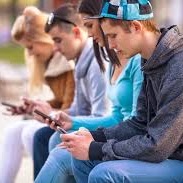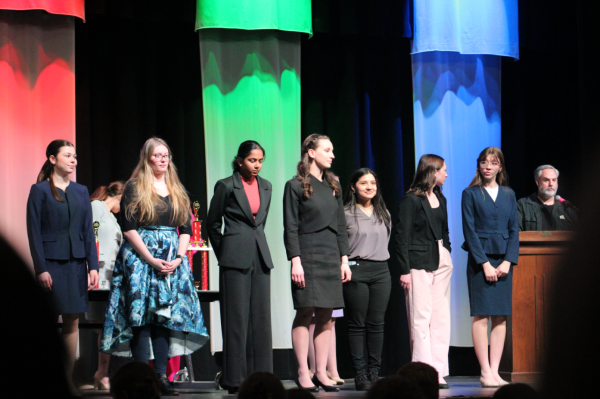LHS Overdoses on Screen Time

It is no doubt that social media has become a large part of many students’ lives around the world — and it’s no different here for students at LHS. From birth, we have lived in a world of large technological advancement, and consequently our youthful generation has had to experience the changes of society from that.
According to the Child Mind Institute, an independent organization that deals with helping families with children who suffer from mental health disorders and learning disabilities, since the introduction of smartphones in 2007 to 2015, depression rates among 8th to 12th graders increased 33% and suicide among girls of that age group increased 65%.
 This seems to be more than coincidental. Using the settings app, students at LHS revealed how much time they spend on their phone a day.
This seems to be more than coincidental. Using the settings app, students at LHS revealed how much time they spend on their phone a day.
“My daily average is six hours and sixteen minutes,” senior Jillian Penz said.
Doctor Mike Brooks from PsychologyToday notes that, “1 to 2 hours of recreational screen time is enough for kids and teens.”
When surpassing that number, students put themselves at liability of being addicted to their screen whether they realize it or not. Effects of this can result in a decrease of in-person communication skills, body dysmorphia, and anxieties that wouldn’t naturally be there without social media.
Senior Lesley Alcala had a daily average of six hours and five minutes on her phone, sophomore Nick Todd had a daily average of four hours on his phone, and freshman Finley Gay had a daily average of five hours on his phone — and they all agree that social media is a dangerous thing.
“Despite the many advantages that it brings, it can also bring tons of negativity,” Alcala said. “One platform in particular being Twitter.”
 Twitter has been one of the most notorious social media platforms for the widespread act of misinformation. Growing up in a world of misinformation can create many internal anxieties that just build up. Believing you have to look or act a certain way to be recognized as popular or beautiful is harmful.
Twitter has been one of the most notorious social media platforms for the widespread act of misinformation. Growing up in a world of misinformation can create many internal anxieties that just build up. Believing you have to look or act a certain way to be recognized as popular or beautiful is harmful.
Another issue it creates is FOMO: the Fear Of Missing Out. Since our generation of students at LHS mostly live their lives online, we are constantly bombarded with what everyone else is doing, otherwise known as what we are missing out on.
“Social media platforms can help you spread awareness to issues that need to be addressed and stay connected with the world. On the other hand, teens can get caught up on what other people around them are doing and will focus on that instead of themselves,” Todd said.
Some students can offer a compromise in using it.
“Ultimately, I think social media platforms are best used in moderation with real life interactions,” said Gay.
Social media is a double-edged sword. It has allowed people to find organ donors, charities to reach a larger audience for donations, and reconnected lost family members. Yet, it also seems to be simultaneously failing our youth.
“I believe that without social media I wouldn’t have as many insecurities. It is so easy to hide flaws behind a screen and compare yourself to every post that you scroll through,” said Penz.
Whether one believes if the positives outweigh the negatives of social media, it’s no doubt that it is hurting today’s youth on a larger scale than ever. The day has long passed from social media being a tool; it is now something that wants everyone’s attention without regards to the underlying mental health concerns it instills in the students at LHS and students everywhere.
Your donation will support the student journalists of Logansport High School. Your contribution will allow us to purchase equipment and cover our annual website hosting costs.

I joined Magpie this year because I find the best way of learning anything about life is talking to people. I love the social aspect in journalism, and...









